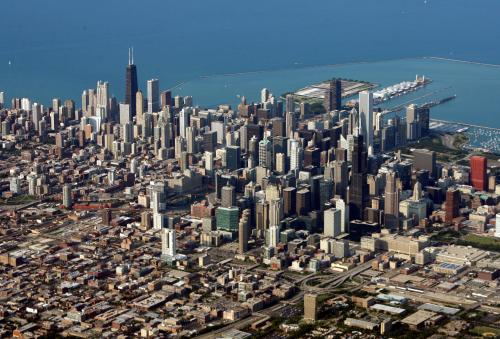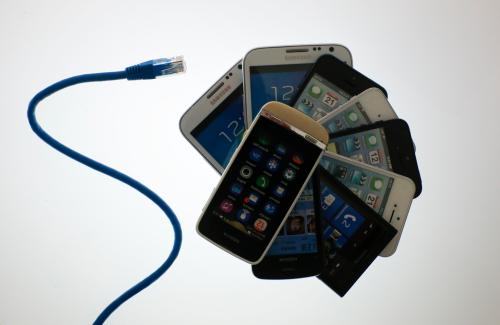This is the first in a series of three blogs on cities, technology, the next generation of urban development, and the next administration. In this one, I’ll discuss Hillary Clinton’s recent technology plan and in particular, the significance of her endorsement of, and a willingness to invest in, a civic Internet of Things.” In the second, I will lay out why the federal government should focus on how cities are likely to be the primary government jurisdictions on the leading edge of using new technology to transform the public sphere. In the third, I will suggest five specific policies for how either a Clinton or Trump Administration could accelerate economic growth and social progress by helping cities use emerging technologies.
(As a member of the Clinton Technology Advisory Group, I had an opportunity to propose and review some of her proposals. The ideas I present here are mine and do not reflect the views of the committee or of the Brookings Institution.)
Presumptive Democratic nominee Hillary Clinton recently laid out her technology plan. A number of the ideas represent the continuation and expansion of current Obama administration strategies of increased broadband deployment and adoption. Others call for reinvigorated efforts for education and training related to technology and innovation in government. From a political perspective, the most significant policy is probably the call to protect the FCC’s decision to reclassify internet service providers as Title II common carriers, as that is one technology issue where the presumptive Republican nominee Donald Trump has taken a clear and contrary point of view.
From the perspective of cities, however, the most significant policy may be Clinton’s endorsement of the civic Internet of Things. In a section entitled “Foster a Civic Internet of Things through Public Investments,” her plan states that her administration will invest federal research funding to testbedding, field trials, and other public-private endeavors to speed the deployment of next generation wireless networks and a civic Internet of Things. She also commits to using advances in wireless communications and data analytics to improve public safety, health care, environmental management, traffic congestion, and social welfare services.
Why is this proposal so significant? The Internet of Things itself refers to the ability of devices, equipped with far greater computing power and connected to the Cloud and each other through far greater bandwidth, to provide a greater awareness of a situation and to act to improve outcomes. These developments are already having a dramatic impact on how we manufacture goods, in what is generally referred to as the industrial Internet of Things.
The civic Internet of Things is, at one level, simply adding intelligent devices to a number of infrastructure systems generally run by cities, including, but not limited to water, sewer, power, and transportation. It also creates new opportunities to improve the data on which decisions are made in areas such as public safety, public health, and social services.
At a deeper level, however, the civic Internet of Things is this generation’s opportunity to recreate the commons at the heart of all cities. Cities began with the understanding that humans could improve their lives with common facilities, starting with markets and defense. These common undertakings grew into other areas, from transportation to schools to recreational facilities, among many others. The civic Internet of Things can be the next great innovation, unlocking new ways to activate civic engagement—one of the fundamental components of the democratic enterprise—and to deliver public goods and services.
These opportunities raise many new issues. These initiatives will require new investments in physical capital, such as bandwidth and sensors. While technology cost curves suggest these investments will eventually pay for themselves in service improvements, cities—unlike businesses—have a limited first-user advantage for such networks, making it more difficult to accelerate their adoption. Even once up and running, I’ve previously noted that cities will still need to address related questions. How do they assure the data will be used to decrease, and not widen, existing patterns of social inequity? How should cities make the data accessible to private users? How should cities partner with private sector entities to improve their performance, but in ways that avoid creating data monopolies?
Despite the challenges, cities should welcome the opportunity before them. Further, they should welcome the acknowledgement from at least one of the candidates (and, one can hope, eventually both of the candidates) that American leadership in the world will require world-leading cities—and that status can only be achieved with a world-leading civic Internet of Things. At the same time, federal officials should look to cities as the path through which the aspirations they articulate on the campaign trail will actually be achieved. That’s the topic of the next installment.







Commentary
Cities, technology, the next generation of urban development, and the next administration, part 1
July 18, 2016